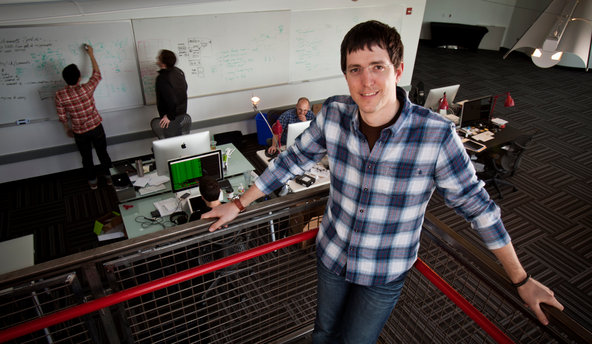Once the tornado passed, the helicopter pilot, Jon Welsh, turned back to survey what had been lost. He pointed out a landmark for local viewers, Veterans Memorial Park, and said starkly, “It’s gone.” Nearby was a housing development. “Completely gone.” Mr. Welsh’s cameraman panned to the south, toward more homes. “Gone.”
Two minutes later he could see a school in the distance. “Oh, my God,” he said, grasping for words. Mr. Welsh called out for police while he tried to identify the cross streets for what turned out to be Plaza Towers Elementary School, one of at least two schools decimated by the storm. The cameraman’s close-up showed adults running toward the rubble.
The immediacy of the television coverage in the aftermath of the Moore tornado contributed to a collective sense of shock in the country, nearly two years to the day after similarly horrific scenes played out in Joplin, Mo., about 200 miles to the northeast. The vastness of the disaster in Joplin wasn’t demonstrated until the sun rose the next morning, but in Moore it appeared to be visible within minutes, thanks in part to KFOR and other local television stations.
The CBS-affiliated station, KWTV, also had a helicopter hovering over the damage not more than 15 minutes after the tornado passed. The cameras, in some cases, beat the rescuers to the worst-hit neighborhoods, and helped viewers near and far process what had happened.. The visuals from Mr. Welsh’s helicopter, in particular, spurred national news organizations to make the tornado damage the top story on their nightly newscasts and Web sites. NBC and CBS even televised special reports shortly after the tornado dissipated.
The live pictures and information, almost universally praised by viewers from afar who saw it online and on cable news channels, reminded some of the enduring value of local broadcasters at a time when apps and social networks tend to get more attention.
The reporters in Moore were supplemented by residents who posted photos and videos on those social networks. CNN at one point on Monday afternoon interviewed an eyewitness to the tornado aftermath who had published six-second videos with Vine, a relatively new app owned by Twitter. By the evening, the text message number for donations to the American Red Cross, 90999, was a nationwide trend on Twitter.
A number of national reporters, like Al Roker of NBC’s “Today” show and Sam Champion of ABC’s “Good Morning America,” were a short distance away from Moore when the tornado touched down. That’s because they had rushed to Oklahoma a day earlier, after an earlier outbreak of tornadoes elsewhere in the state.
By nightfall on Monday they were in Moore. So was Mike Bettes, a correspondent for The Weather Channel, who was among the first to arrive in Joplin after the tornado there. Reporting live on the channel on Monday, Mr. Bettes walked through what used to be a home and gestured to the kitchen, where a car laid, mangled. “I have only seen this once in my life, and that was two years ago in Joplin,” he said.
NBC and CBS said their evening news anchors, Brian Williams and Scott Pelley, respectively, would helm their broadcasts from Oklahoma on Tuesday. The “Today” show, which was supposed to emanate from Yellowstone National Park on Tuesday morning, part of a week-long cross-country tour, scrapped that plan on Monday night and said all of its hosts would be in Moore in the morning instead.
In prime time, NBC’s singing competition “The Voice,” shown live, paused several times to send well-wishes to Oklahoma. CBS postponed what was supposed to be the season finale of “Mike Molly” because the episode, titled “Windy City,” had a storyline involving a tornado. The network scheduled a repeat episode instead and said the tornado-related one would be shown sometime later.
Article source: http://www.nytimes.com/2013/05/21/business/media/helicopter-brings-viewers-vivid-images-of-tornado.html?partner=rss&emc=rss





